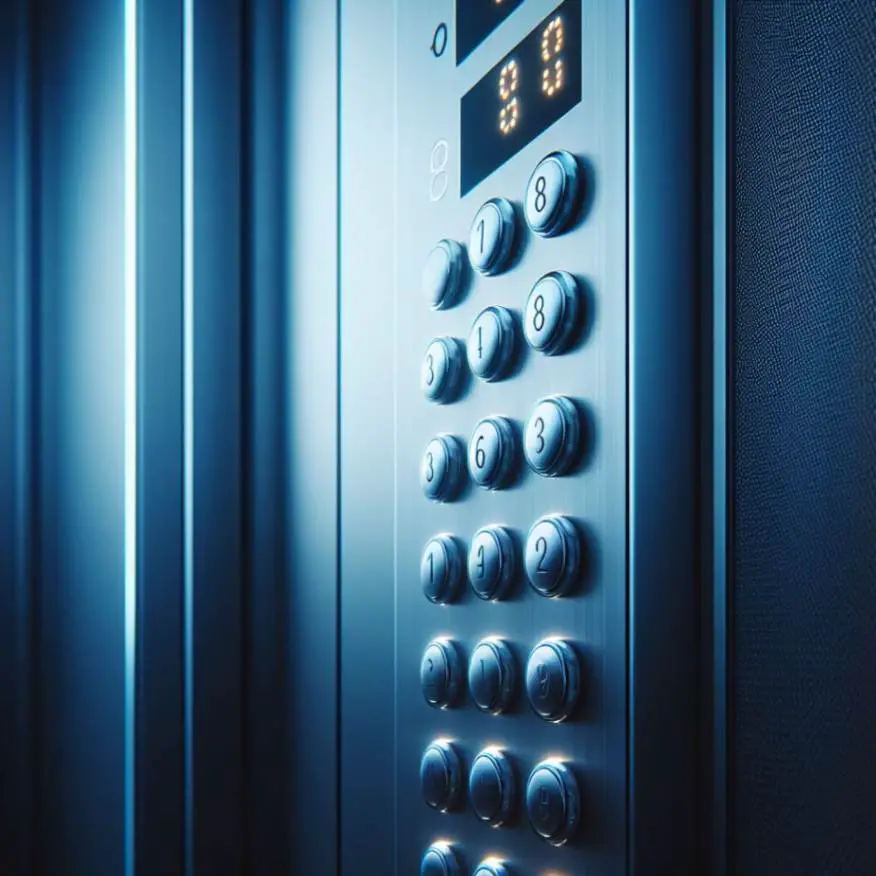In the heart of New York City once stood the iconic World Trade Center (WTC) towers, a symbol of economic might and architectural marvel. However, amidst their grandeur, a curious mystery often whispered among the locals and tourists alike was the absence of the 13th floor. This phenomenon is not unique to the WTC, as many buildings in the United States omit the 13th floor, often due to superstitions surrounding the number 13. This blog post delves into the truth behind the missing 13th floor of the World Trade Center, exploring cultural, architectural, and historical facets of this enigma.
The Roots of Superstition: Why the Number 13?

The fear of the number 13, known as triskaidekaphobia, has deep cultural and historical roots. In Western culture, this superstition is often linked to the Last Supper, where Judas, the disciple who betrayed Jesus, was the 13th to sit at the table. Additionally, Norse mythology recounts a dinner party of 12 gods, where the uninvited 13th guest, the mischievous Loki, caused chaos. These stories, among others, have contributed to the notion that the number 13 brings bad luck.
Architectural Choices: Superstition in Building Design
When the Twin Towers were designed in the 1960s, architects and builders were well aware of the superstitions surrounding the number 13. It was common practice in American architecture to skip the 13th floor, labeling it as 14th instead. This practice wasn’t driven by any architectural necessity but rather by market demands. Building owners and developers believed that tenants would be more likely to rent space in a building without a 13th floor.
The World Trade Center: Did It Have a 13th Floor?
The World Trade Center, comprising the North and South Towers, followed this common practice. Officially, there was no floor labeled as the 13th. Instead, the floors went from 12 to 14. This decision was partly influenced by the cultural context and partly by practical business considerations. The builders wanted to avoid the potential stigma and possible financial drawbacks associated with the number 13.
Beyond Superstition: Practicality and Design
Beyond superstition, there were practical reasons for the floor numbering system in the World Trade Center. The towers had massive mechanical floors that housed the building’s electrical, water, and HVAC systems. These floors were taller than the regular office floors and sometimes led to irregular floor numbering.
The Legacy of the World Trade Center and Cultural Impact
The absence of the 13th floor in the World Trade Center is a small yet intriguing part of its legacy. It reflects how deeply ingrained superstitions can influence even the most modern and monumental architectural projects. Today, the practice of omitting the 13th floor is less common, as newer generations tend to disregard such superstitions.
Conclusion: A Blend of Myth and Reality
In conclusion, the World Trade Center did not have a floor labeled as the 13th, a decision rooted in both superstition and practicality. This choice illustrates how cultural beliefs and business considerations can intertwine, impacting even the most iconic structures. As we remember the World Trade Center, understanding these small details adds depth to our appreciation of its historical and cultural significance.
Did the World Trade Center Have a 13th Floor? FAQs
Did the Twin Towers actually have a 13th floor?
Yes, the Twin Towers of the World Trade Center did physically have a 13th floor. However, in line with a common architectural practice in the United States, these floors were not labeled as the 13th floor. Instead, they were designated as the 14th floor. This practice was a nod to the superstition surrounding the number 13, rather than any structural or architectural necessity.
Why did the World Trade Center skip the 13th floor?
The World Trade Center skipped the 13th floor due to the widespread superstition surrounding the number 13, known as triskaidekaphobia. This superstition is rooted in various cultural and historical beliefs that consider the number 13 to be unlucky. In the context of commercial real estate, developers and builders often omit the 13th floor to avoid potential tenant concerns or superstitions.
Was the 13th floor omitted in both Twin Towers?
Yes, the 13th floor was omitted in both the North and South Towers of the World Trade Center. The floor numbering went from 12 directly to 14. This was a standard practice in both towers, reflecting the common trend in American skyscraper construction.
Did the World Trade Center have any other superstitious elements?
There is no widely known information about other superstitious elements specifically incorporated into the design or construction of the World Trade Center. The omission of the 13th floor is the most notable example of a superstition-based decision in the towers’ design.
Were there any unusual features on the 14th floor of the World Trade Center?
There were no reported unusual features on the 14th floor (which was effectively the 13th floor) of the World Trade Center that differed significantly from other floors. The floors were designed uniformly for office use, with standard features typical of a commercial skyscraper.
Do other buildings also skip the 13th floor?
Yes, many other buildings, especially in the United States, also skip the 13th floor. This practice is not universal but is quite common in skyscrapers and hotels where the building owners or developers believe that tenants or guests might be superstitious about the number 13.
Is there any evidence to suggest that omitting the 13th floor actually prevents bad luck?
There is no scientific evidence to suggest that omitting the 13th floor has any effect on the incidence of bad luck or negative events in a building. The practice of skipping the 13th floor is based entirely on cultural superstitions and not on empirical evidence or rational considerations.








